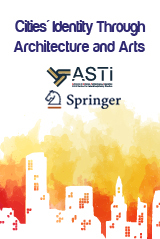
Cities are, by their very nature, a melting pot of people, sights, sounds, aromas, and ideas making them focal points of a particular culture. This is especially true about the expressions in and of its politics, economics, language, climate, religion and even food. The poor migrate to the cities to get better opportunities, the middle-class stay due to its convenience and even the rich don’t want to leave their status quo of comfort and fashion. All of this can be seen from the buildings that adorn the cities around the world. However, a city’s identity is much more complex than that. Constantly evolving through many years of construction, destruction, and development from the physical, cultural and sociological perspectives of its residents, cities become the embodiment of its human inhabitants. The collective memories of its residents and frequent visitors thus solidify into that which is most pleasing and convenient for them to live, work, play and relax in.
This book discusses how Architecture and Arts, from the modern and historical buildings to the graffiti art and museums, are part and parcel of the historical, cultural, and financial characteristics of the city. Furthermore, the book explains the transformation of cities and urban cultures and investigates a number of new approaches developed for and with contemporary scientists with the ultimate goal of affecting the tourism, education level, cultural integrity and economic prosperity for the better. Topics such as identity retention and how strategies can be developed so cities can successfully advertise themselves on the global market. Readers will include researchers, scientists, academics and other professionals with a keen interest in Architecture, the Arts, global tourism and its effect on worldwide cultures and economies.
